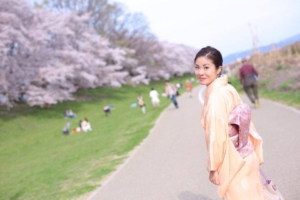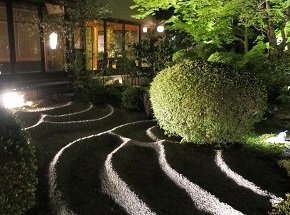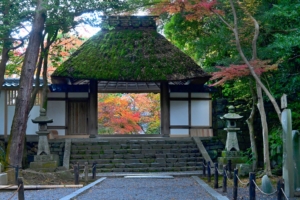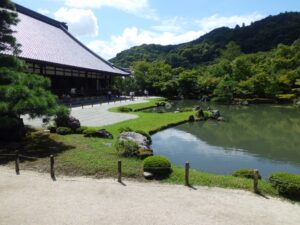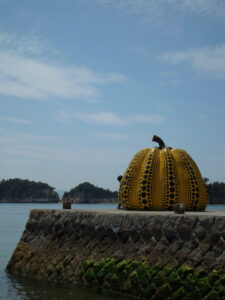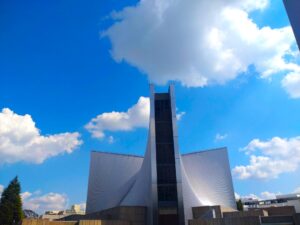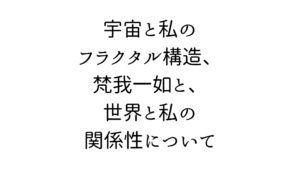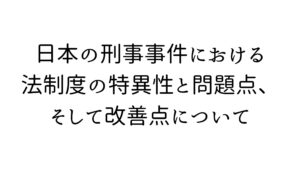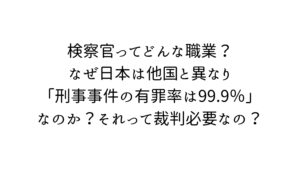Buddhism, which had just arrived in Japan, did not have the concept of a garden.
日本に入ってきたばかりの仏教は、庭の概念を持っていませんでした。
However, when Buddhism came to Japan during the Asuka period, Taoism(道教), which also had the concept of a garden, came along with it, and a garden was added to Buddhist architecture in Japan.
しかし、飛鳥時代に仏教が日本に入ってきたときに、庭の概念を持っていた道教も一緒に入ってきたため、日本の仏教建築に庭も付けられることとなりました。
The basis of the Taoist garden concept is Mount Horai(蓬莱山). Mount Horai is believed that hermits live.
道教の庭の概念の基本は蓬莱山です。蓬莱山には、仙人が住んでいると考えられています。
The Jodo(浄土) garden is a form of garden built between the Heian and Kamakura periods that attempted to recreate the world of the Jodo of Paradise(極楽浄土).

浄土庭園は、平安時代から鎌倉時代にかけて築造された形式で、極楽浄土の世界を再現しようとしたものです。
The most important part of the Jodo Garden is Su-hama(州浜).
その浄土庭園の中で一番重要なものが、州浜です。
Su-hama is not found in the gardens of Korea or China.
その浄土庭園で最も重要なものは、州浜です。州浜は韓国や中国の歴代の庭にはありません。
Originally, Su-hama was a place for ceremonies. As a place of ceremony, it was covered with pure white sand.
州浜は元々、儀式の場でした。儀式の場として、真っ白い砂を敷き詰めました。
White objects such as su-hama have a history of being laid in important places in Japan since the time of nature worship, before Shintoism and Buddhism.
worship:崇拝、礼拝
州浜のような白いものは、神道や仏教以前に、自然信仰の頃から日本では大事な場所に敷かれてきた歴史があります。
執筆者:山本和華子
【本を出版しました】
日本文化は、ただ格式高いだけじゃないし、ただ綺麗なだけじゃない。
本書を読むことで、日本文化を多角的視点からとらえることができるようになります。
日本文化とは、一辺倒の歴史だけで語れるものではありません。
本書は日本文化の入門書であると共に、茶道や美術、刀剣や文学など、幅広いテーマを取り扱っています。
また、富山藩の売薬商人の歴史や、安楽庵策伝の茶人としての顔など、上級者向けの内容も書かれています。
そして、著者独自の視点で鋭く書かれた文章も一読の価値ありです。
I have published a book. It explains Japanese culture in both English and Japanese.
